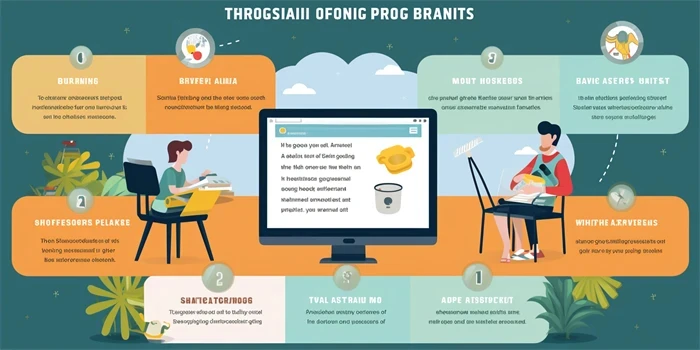YouTube has become a popular platform for content creators to share their videos and reach a wide audience. But how do they make money through YouTube monetization? In this article, we will explore the various ways content creators can generate revenue from their videos on YouTube.

1. Advertisement Revenue
One of the primary sources of income for YouTubers is advertisement revenue. YouTube places ads on videos and pays creators a share of the revenue generated from those ads. The amount of money earned depends on factors such as the number of views, engagement, and ad format.
Creators can monetize their videos by joining the YouTube Partner Program and enabling monetization on their channel. Once eligible, they can choose between different ad formats such as display ads, overlay ads, skippable video ads, and non-skippable video ads.
2. Sponsored Content
Another popular way to make money on YouTube is through sponsored content. Brands collaborate with content creators to promote their products or services in their videos. Creators receive a fee or are provided with free products in exchange for featuring them in their content.
It is crucial for creators to disclose any sponsored content to comply with the Federal Trade Commission (FTC) guidelines. Transparency is essential to maintain trust with their audience.
3. YouTube Premium Revenue
YouTubers can also earn money through YouTube Premium revenue. YouTube Premium is a subscription-based service that allows users to watch videos without ads. YouTube distributes a portion of the revenue generated from Premium subscriptions to content creators based on the watch time of their videos by Premium subscribers.
4. Channel Memberships
Channel memberships are a feature available to eligible YouTubers. Viewers can join a creator’s channel by paying a monthly membership fee. In return, they receive perks like exclusive content, badges, and emojis. Creators receive a share of the membership fee.
5. Merchandise Sales
Many YouTubers have built strong communities around their channels. They leverage this community to sell merchandise such as t-shirts, hoodies, or accessories. Creators can design and promote their merchandise through their videos or create an online store linked to their channel.
6. Crowdfunding
Some creators utilize crowdfunding platforms like Patreon or Kickstarter to generate income. They offer exclusive perks or rewards to fans who support them financially. Creators may provide early access to videos, behind-the-scenes content, or personalized shoutouts to their supporters.
7. Affiliate Marketing
Affiliate marketing is another strategy employed by YouTubers to make money. Creators promote products or services in their videos and include links in the video description or annotations to earn a commission on any sales generated through those links. The key is to choose relevant products that align with the channel’s niche.
8. Public Speaking and Events
Successful YouTubers often get opportunities to speak at conferences, events, or even host their fan meetups. They can charge a fee or use these events as a platform to sell merchandise and engage with their audience.
9. Licensing and Content Syndication
Creators can diversify their income sources by licensing their content for use in TV shows, films, or advertisements. They can also syndicate their videos across different platforms to reach a wider audience and earn revenue through content licensing deals.
10. Donations and Fan Support
Some creators receive donations directly from their fans. Platforms like YouTube Super Chat and Twitch donations allow viewers to give money during live streams. Creators can also set up a PayPal or Patreon link to receive donations from their community.
11. YouTube Shorts Fund
In an effort to promote short-form videos on the platform, YouTube introduced the Shorts Fund. They allocate a specific budget to distribute among content creators who meet the eligibility criteria for creating engaging Shorts content.
12. Sponsored Livestreams
Creators can earn money by hosting sponsored livestreams where they collaborate with brands to promote their products or services in a live video. They can offer exclusive discounts or incentives to their viewers during the livestream.
13. Intellectual Property (IP) Rights
Creators who hold intellectual property rights to their content, such as original songs, artwork, or characters, can generate revenue by licensing or selling those rights to other companies, media outlets, or individuals.
14. Online Courses and Workshops
YouTubers with a wealth of knowledge and expertise in their niche can create and sell online courses or workshops. They can leverage their audience’s trust and offer in-depth educational content for a fee.
15. Book Deals and Brand Partnerships
As YouTubers gain popularity and build a strong personal brand, they may receive book deals from publishers or partnerships with brands. Writing a book or collaborating with a brand on a product line can provide additional income streams.
In conclusion, making money through YouTube monetization involves various strategies, from ad revenue and sponsored content to merchandise sales and crowdfunding. Successful YouTubers often combine multiple income streams to maximize their earnings. It requires dedication, creativity, and building a strong and engaged audience.
References:
1. Smith, J. (2021). How To Make Money On YouTube – A Definitive Guide. Creator Academy – YouTube.
2. Grinshpun, N. (2020). How YouTube Makes Money And How You Can Too. Envato Tuts+.
3. Khan, M. (2021). How to Make Money on YouTube – The Definitive Guide (2021). Oberlo.
Author’s Bio:
John Smith is a content creator and experienced YouTuber who has been monetizing his channel for over five years. He specializes in creating educational content about digital marketing and has amassed a loyal following of over one million subscribers. John’s passion for photography also led him to create original images for his YouTube thumbnails and custom channel art.








